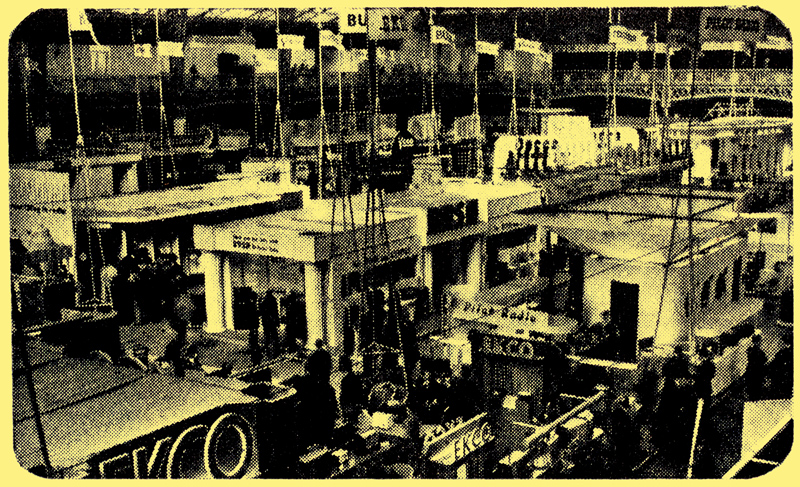|

Radiolympia October 1947.
Arrangements are already well advanced for the first post-war National Radio Exhibition, to be held at Olympia, London, from 1st-11th October. Naturally, at this early stage there are many details of the show to be finally settled, but it is already clear that the organizers, the Radio Industry Council, have brought in some radically new ideas.
In our opinion the Olympia shows of the years immediately before the war contributed much less than they might have done towards the growth of radio. They were essentially planned to 'sell' broadcasting to the public - and that was already 'sold'. Although we welcome co-operation between those who conduct broadcasting and those who make the equipment with which it is received, it seems no function of the industry to act as unpaid publicity agents for the BBC. The shows were devoted almost exclusively to broadcasting, and dealt hardly at all with other branches. Emphasis on severely technical developments was considered as being out of keeping with the spirit of the exhibition, and no great effort to cater for those interested in such things was made. There were as a rule few exhibits of even a mildly educational nature; little, in fact, to encourage members of the public to take an intelligent interest in the technical means by which broadcasting was brought to them and little to help them to obtain the best possible results from their equipment.
There are, as we have said, signs that all this is to be changed at the 1947 show. A large number of manufacturers of non-broadcast apparatus - transmitters, electronic equipment, etc. - are expected to be represented, as will Government departments and other non-commercial users of wireless. If, as we understand, the show is to be of a more informative nature than in the 1930s, that is strictly in harmony with changes brought about by the war, when untold thousands of men and women became familiar with wireless. A large number of them attained a high technical standard and of these a good proportion retain their interest in radio. Suitably encouraged, they will exert an important influence on public appreciation of the finer points of broadcast receiver design and performance.
It is to be hoped especially that means will be sought to instruct and inform visitors of the potentialities of modern equipment and how to use it to best advantage. Of course, bearing in mind the diverse nature of the attendance at a public exhibition, it will be all to the good. if the pill of instruction can be coated with the gilt of entertainment, but we think that there is plenty of scope for serious educational exhibits.
As an example of something on which the public needs information, the broadcast receiving aerial comes to mind. This matter was forcibly brought out by a contributor to the correspondence section of our May issue. He contended that ten million-odd listeners have been encouraged for so long to use their sets with no aerial, or with a miserable apology for an aerial, that few of them realise the possibilities of the modern broadcast receiver. Here is an opportunity to devise a convincing exhibit to demonstrate the benefits conferred by a proper aerial system used with a sensitive set.
|